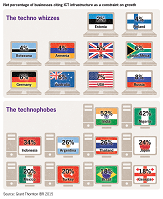-
國內財務簽證及PCAOB財務簽證
真正讓我們與眾不同的是我們服務客戶的經驗,讓正大所能夠在客戶服務上面創造更多的價值
-
稅務簽證
國稅局對於優質會計師事務所出具之報告作書面審核,公司被選案查核機率較低
-
營業稅簽證
本所採用Grant Thornton Voyager 軟體及其他軟體工具等,來提升工作效率
-
公開發行及上市櫃專案輔導與規劃
本所特將會計師與經理群之菁英分成八大部,組成團隊並提供最迅速而完善之專業服務
-
IFRS專區
分享Grant Thornton International之國際財務報導準則專業服務團隊及成員所內專家之寶貴經驗
-
移轉訂價服務
移轉訂價服務
-
跨國交易租稅規劃
跨國交易租稅規劃
-
外國專業投資機構之稅務代理人(FINI/FIDI)
外國專業投資機構之稅務代理人(FINI/FIDI)
-
所得稅法第4條,第8條及第25條等專案申請
所得稅法第4條,第8條及第25條等專案申請
-
租稅協定之專案申請
租稅協定之專案申請
-
租稅獎勵申請
租稅獎勵申請
-
稅負平衡政策訂定與假定稅計算
稅負平衡政策訂定與假定稅計算
-
代為計算薪資及各項扣繳
代為計算薪資及各項扣繳
-
資遣通報
資遣通報
-
處理薪資轉帳事宜及繳納扣繳稅款
處理薪資轉帳事宜及繳納扣繳稅款
-
勞保賠償給付申請
勞保賠償給付申請
-
勞健保,二代健保及退休金之申報及繳納
勞健保,二代健保及退休金之申報及繳納
-
年底開立扣繳憑單
年底開立扣繳憑單
-
IT 顧問服務
IT 顧問服務
-
PRIMA 顧問服務
PRIMA 顧問服務
-
營運計劃書編制
營運計劃書編制
-
績效考核服務
正大聯合會計師事務所協助企業進行績效制度建立及優化,創造勞資雙贏的局面。
-
沙賓氏法案第404條遵循查核
沙賓氏法案第404條遵循查核
-
內部稽核服務
內部稽核服務
-
協議程序(併購交易實地查核)
協議程序(併購交易實地查核)
-
風險管理服務
協議程序(併購交易實地查核)
-
舞弊調查服務
舞弊調查服務
-
電腦鑑識服務
電腦鑑識服務
-
外籍人士工作證申請
外籍人士工作證申請
-
商業文件英日文翻譯服務
商業文件英日文翻譯服務
-
公司、分公司、行號設立登記
公司、分公司、行號設立登記
-
外商分公司、辦事處設立登記
外商分公司、辦事處設立登記
-
陸資來台投資設立登記
陸資來台投資設立登記
-
行政救濟
行政救濟
-
企業法律諮詢
企業法律諮詢
-
破產與限制
破產與限制
-
公司解散和清算
公司解散和清算
-
供應商和員工背景調查
供應商和員工背景調查
-
存證信函草稿服務
存證信函草稿服務
-
中英文協議的準備和審查
中英文協議的準備和審查
-
放寬限制出境
放寬限制出境
-
勞動法合規與勞資談判
勞動法合規與勞資談判
-
企業和個人資產規劃
企業和個人資產規劃
-
企業評價服務
企業評價服務
-
ESG 確信報告及相關顧問業務
正大聯合會計師事務所取得了金管會授權辦理 ESG 確信業務(永續報告及溫室氣體)。 目前已經協助許多企業辦理ESG相關業務,如需更多相關資訊,歡迎與我們ESG負責的會計師聯絡。
-
網際網路購物包裝減量會計師確信報告服務
「公司之資本額、實收資本額或中華民國境內營運資金」達1.5億元以上,或自有到店取貨據點數達500以上之網際網路零售業,在包裝減量方面在包裝減量方面,應依平均包裝材減重率或循環箱(袋)使用率規定擇一辦理,且其減量成果須於每年3月31日前經會計師出具確信報告。關於會計師確信報告服務,歡迎跟我們聯絡。

-
其他政府委託專案查核
其他政府委託專案查核
-
財團法人及社團法人等非營利組織(公益慈善基金會)
財團法人及社團法人等非營利組織(公益慈善基金會)
-
文化教育相關產業(私立學校)
文化教育相關產業(私立學校)
How important is ICT infrastructure to business growth prospects?
Fifteen years into this century, in a world grappling with mobile and wearable tech, and a vast online economy, I’d argue the answer to that question is that it’s never been more vital than it is today.
How businesses benefit from good ICT infrastructure is a topic Grant Thornton explores in its International Business Report every quarter. You may have seen the latest findings on business optimism heading into the New Year, but the thoughts of business on enablers of and barriers to growth throw up some fascinating food for thought.
Looking ahead to the next 12 months, we asked leaders about the extent to which they felt their current ICT infrastructure – both that which they have in place as businesses and the wider environment their business operates in – is a constraint on their growth prospects (see chart).
 Some of the names at the bottom of the list, where the fewest businesses cite ICT as a concern, may surprise you. Right at the bottom is Estonia, where just 2% of business leaders feel it acts as a constraint. Finland and Botswana make up the bottom three, followed by Armenia. A swathe of major Western economies then follows in the top ten, in the shape of the UK, Germany, Australia and the USA.
Some of the names at the bottom of the list, where the fewest businesses cite ICT as a concern, may surprise you. Right at the bottom is Estonia, where just 2% of business leaders feel it acts as a constraint. Finland and Botswana make up the bottom three, followed by Armenia. A swathe of major Western economies then follows in the top ten, in the shape of the UK, Germany, Australia and the USA.
Estonia’s position in our research might surprise a few people but in fact, it is an economy blazing a trail when it comes to getting the most out of technology. For example, Wi-Fi is free across the country. Estonia also boasts one of the world’s most advanced ID card systems. Each citizen carries a chip in a card which acts as their secure login to a wide range of government services online, from voting to picking up prescriptions.
This is a country which has embraced the internet revolution and firmly embedded technology and communications into its post-Soviet, 21st Century identity. Countries around the world can no doubt learn much from the Estonian way. Not least how businesses and the wider economy can utilise technology to improve efficiency, increase flexibility and ultimately drive down costs.
However, scale is undoubtedly a critical factor. Rolling out cutting edge ICT infrastructure in a country of Estonia’s size is a different proposition to the country at the other end of our list. Business leaders in India are the most concerned about their ICT infrastructure, with over half – 52% - citing it as a constraint on their ability to grow. Second highest is Nigeria, followed by Indonesia, Argentina, Thailand and then, perhaps surprisingly for a country with such rich technological heritage, Japan.
India’s position is significant. One of the world’s great emerging economies, expected to overtake China as the most highly populated nation on earth with the next decade, it continues to grow – but the rate has slowed. Five years ago India’s growth rate was over 10% but that has almost halved since then, and chronic underinvestment in critical infrastructure, such as ICT, is cited as one of the factors behind the growth slowdown.
Indian businesses will hope that change is on the way. New Prime Minister Narendra Modi has put infrastructure investment front and centre of his economic development plans, including fibre optic networks branching out into rural as well as urban areas.
Clearly, though, this will take time. Affecting change on this scale, with a country the size of India, is a genuine 'turn-round-the-juggernaut-task'. A phrase you often hear with India is “untapped potential”, and I think the drive to improve IT and communications across the country is a case in point. So could we see India’s position in our table change in 12 or 24 months’ time? The local business community will hope so – but they may need to be patient.
Rob McGillen is global head of technology at Grant Thornton

